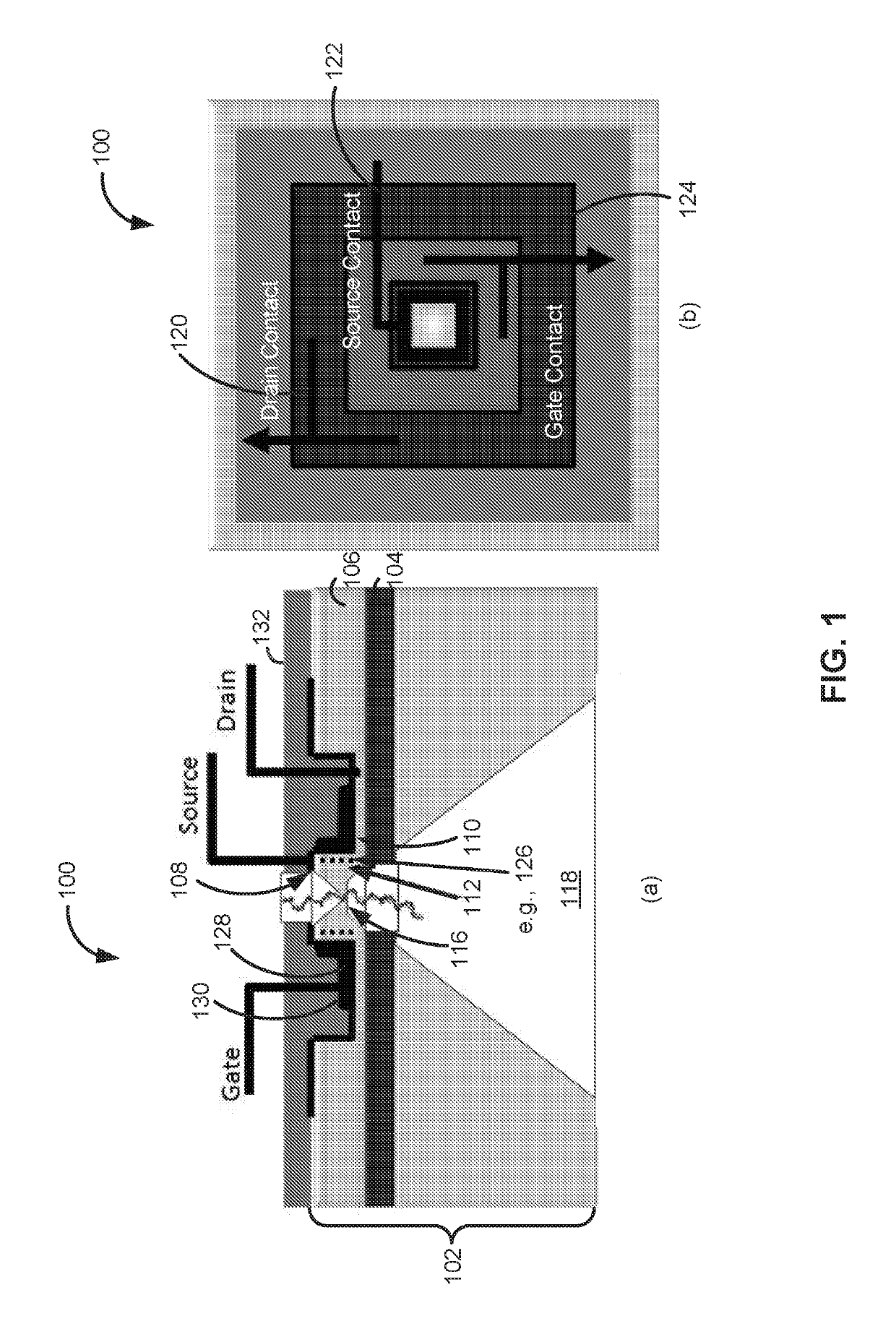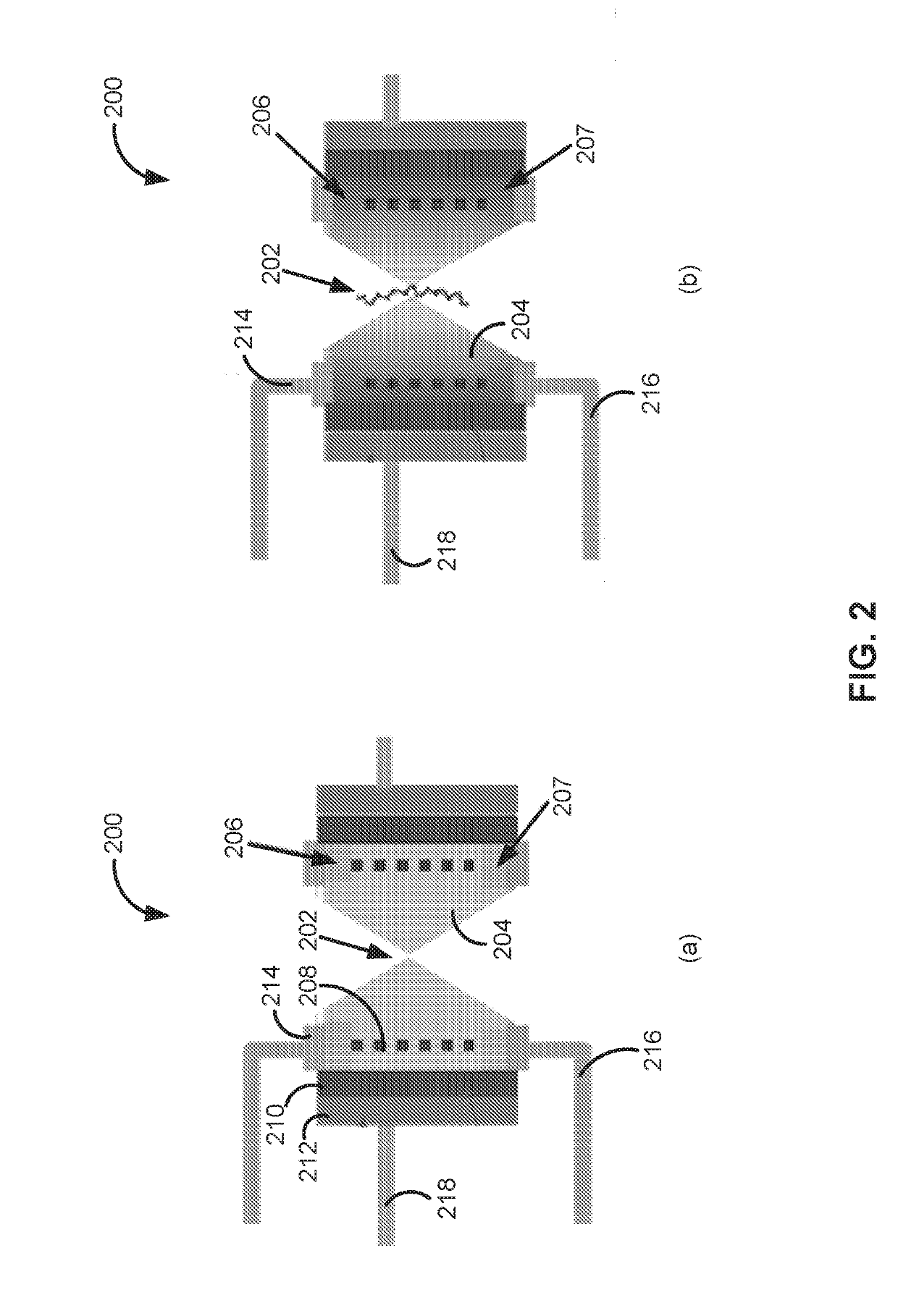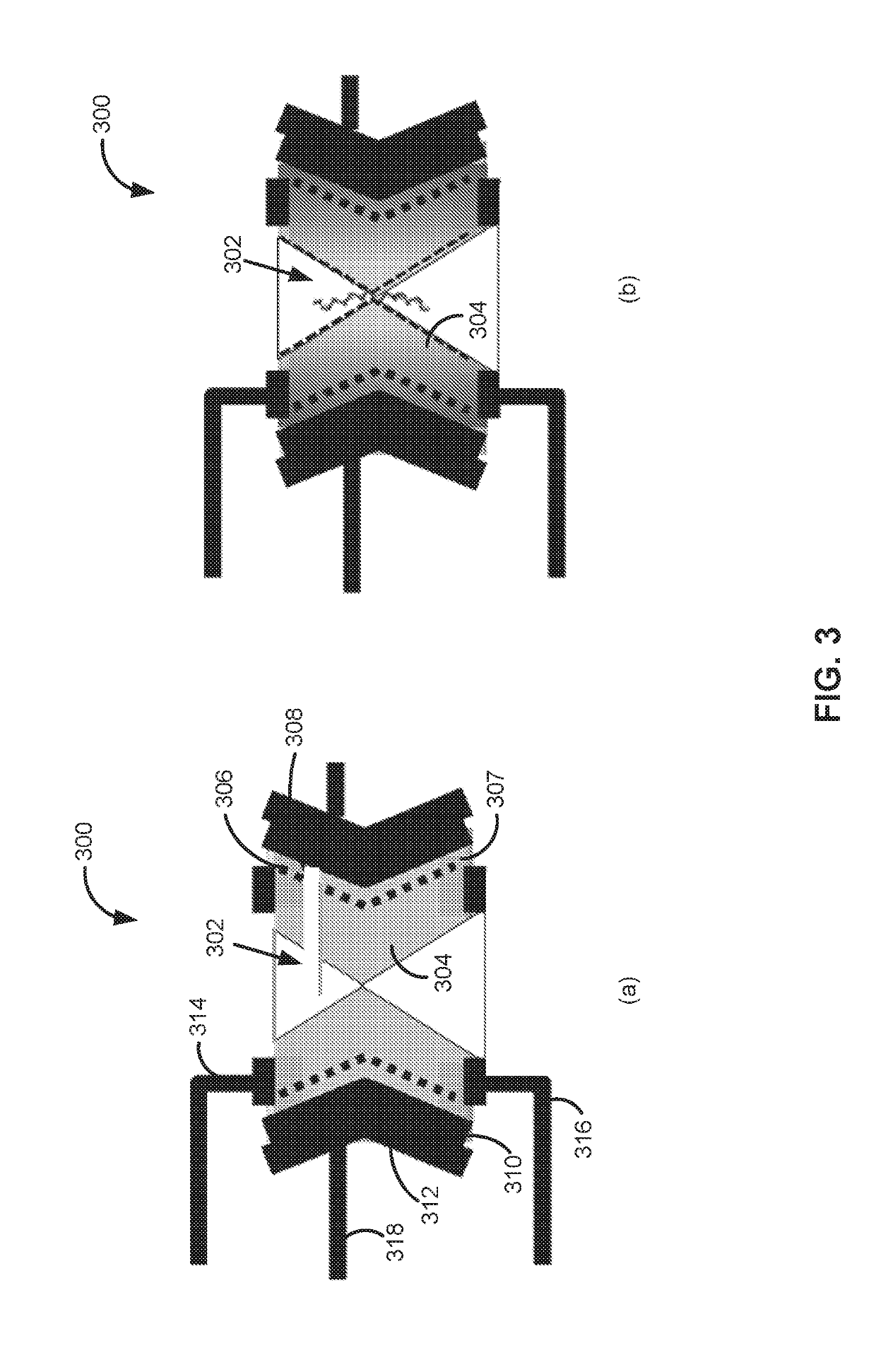Nanopore sensor, structure and device including the sensor, and methods of forming and using same
a technology of nanopores and sensors, applied in the field of nanopore sensors, structure and devices including sensors, and methods of forming and using same, can solve the problems that the current nanopore sequencing method cannot effectively sense and discriminate the passing dna base, and the current nanopore sequencing method suffers from certain fundamental technical limitations, so as to improve the resolution of base detection and sequencing, the effect of increasing the sensor interaction distance from the bas
- Summary
- Abstract
- Description
- Claims
- Application Information
AI Technical Summary
Benefits of technology
Problems solved by technology
Method used
Image
Examples
example
[0180]As illustrated in FIGS. 38 and 39, Tau is a strand like protein. It is phosphorylated (and also other PTMs involved) in Alzheimers, at many sites. Using a sensor device, such as device 2800, one can detect the locations of Tau phosphorylation, which is a very specific and sensitive biomarker detection method of Alzheimers diagnostic.
[0181]Additional Methods for Sequencing Include the following.
[0182]Sequencing of Unmodified ssDNA:
[0183]Devices as described herein can be operated as sensor in different modes of operations, viz potential coupled mode and charged coupled mode. Base charge induced potentials on nanopore capacitor electrodes on the order of a milli volt have been reported in literature, varying between bases in magnitude and spatial distribution, calculated in response to external applied fields in a nanopore capacitor. Potential variation on the order of few ten micro volts to milli volts should be detectable by operation of a device as described herein in potenti...
PUM
 Login to View More
Login to View More Abstract
Description
Claims
Application Information
 Login to View More
Login to View More - R&D
- Intellectual Property
- Life Sciences
- Materials
- Tech Scout
- Unparalleled Data Quality
- Higher Quality Content
- 60% Fewer Hallucinations
Browse by: Latest US Patents, China's latest patents, Technical Efficacy Thesaurus, Application Domain, Technology Topic, Popular Technical Reports.
© 2025 PatSnap. All rights reserved.Legal|Privacy policy|Modern Slavery Act Transparency Statement|Sitemap|About US| Contact US: help@patsnap.com



